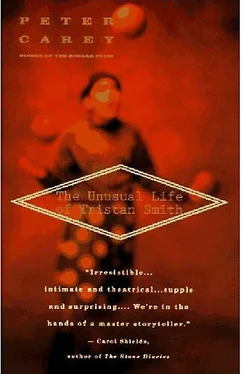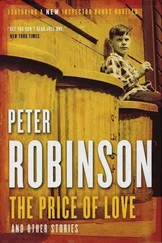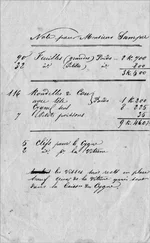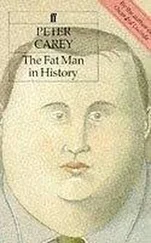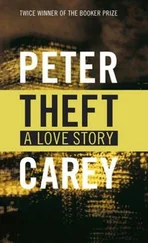The Second and Third Witches threw the gauge iron to the sawdust-covered floor. When the drumming stopped, Vincent leaned forward in his Starbuck, his hand underneath his ear.
He was convinced my maman had me with her on the stage, and he listened for my ‘singing’ beneath the text like you may listen for a burglar’s footsteps under the noise of the vid. He waited in this strained, intense way throughout Scene II.
Then the drums came back. Then the Witches. The First Witch stood off to upstage left, in what was, technically, a weak position. Somehow she used it to dominate the stage. The Third and Second Witches leaped and screeched, but the First Witch was immobile, wrapped in rubber.
Then Macbeth came in with Banquo, one red, one blue, both of them sweating in their airless suits.
When the Third Witch went to say her line (‘Thou shalt get Kings, though thou be none’) , the First Witch stepped across and stole it from her.
‘Thou shalt get Kings,’ she said, and then revealed Tristan Smith in his hiding place, inside the cloak against her sweating breast. She held me up, high, turning slowly so I could be seen on all sides. She had one hand between my legs, the other behind my neck and head. A boy behind Vincent gave a grunt of fright.
Macbeth said, ‘Oh God.’ It was clearly audible.
The First Witch’s eyes were opals, burning.
‘Thou shalt get Kings, though thou be none,’ she said, and thrust me out into the world.
ENTER TRISTAN SMITH — a gruesome little thing, slippery and sweating from his long enclosure in that rubber cloak, so truly horrible to look at that the audience can see the Witches must struggle to control their feelings of revulsion.
He is small, not small like a baby, smaller, more like one of those wrinkled furless dogs they show on television talk shows. His hair is fair, straight, queerly thick. His eyes are pale, a quartz-bright white. They bulge intensely in his face. He has a baby’s nose — but in the lower part of his severely triangular face there is, it seems, not sufficient skin. His face pulls at itself. He has no lips, but a gap in the skin that sometimes shows his toothless gums. He has, as make-up, two blue dots, one on each cheek.
Vincent saw him. His son. He saw the ghastly rib cage, saw his shrunken twisted legs, bowed under him, heard him make that noise he had called ‘singing’.
Vincent put his hand up to his open mouth.
Tristan’s forehead mirrored his, wrinkling like a piece of cloth. Then, from the depths of his turbulent stomach, he brought forth the business that was bothering him — yellow-green, strongly sulphurous. His mother did not notice it for a full minute, but when she did she smeared it on her cheeks — one stroke on each like a decorative scar — and blew kisses to the fellow in the front row dressed in black.
I did not come back on stage, but for Vincent the aesthete, who felt he had invented me, it was a kind of hell. He was left alone with his thoughts and theories in the dark — a two-hour production with no interval.
*
Gauge iron is known to you in Voorstand as galvanized iron, an essential building material in many colonial countries including Efica. In Chemin Rouge we grow up listening to deafening tropical rain on gauge-iron roofs, knowing what it is for roofs to rust, to leak, to lift in cyclones, to gleam in the sun.
[TS]
So let me ask you, did you notice, in the theatre, how the witch’s suit was red? A slightly plummy red? Did it signify something political — the red, also the blue?
Meneer, Madam, forgive me — but if you had a little more knowledge of the countries whose destiny you control, I could get on with my story. I am eager to let you see how my mother and I abandoned the stage and retired to the tower apartment, but it is now obvious you know nothing of Red and Blue and therefore nothing about Efica. As you yourselves were once subjects of the Dutch you will understand my passion to set this right before we move on — it is the periphery shouting at the centre, and you will forgive me, I hope, for surmising that you know even less about Efica than the British and the French who colonized the eighteen islands, murdered its indigenous inhabitants, set up dye works and prisons, and then abandoned us as being an unsuccessful idea.
In the dreadful years of 90, 91, 95, our population nearly starved — French dyers, English convicts — it made no difference. We were left with little seed grain, no ships, abandoned like a folly three thousand miles from home. In the great European Exhibition of 102, none of our European parents devoted so much as a bioscope image to our existence, while we, even while our children’s bellies swelled and our mothers’ breasts dried up, comforted ourselves with Shakespeare and Molière.
Three hundred years later the same habits persist on both sides. And even you — literate, liberal, students of the Sirkus and the pages of the Saarlim Verlag — will need a little assistance in spite of the fact that we both speak, more or less, the same language.
If you follow foreign affairs you may know that we are a country whose southern islands are granite, that the granite is filled with caves which the English once found attractive as ready-made prisons, and that you, from the year 358, have found useful as a place to lay your miles of ‘navigation cable.’ *
Whatever this navigation cable does, your government will not say, not even to our government, but you value it immensely, and value our ‘Red’ governments which let you keep all this shiny metal lying in our guts. Red? Did I say ‘red’? I did, Meneer, Madam. It is red I wish to speak of now.
If you make anything red in Efica, it means something particular, but not what you are presently imagining. It was red dye-stuffs the French came to get, the reason they shanghaied the master dyers of Rheims and shipped them to Chemin Rouge, the reason you will sometimes find Efica on old French maps named ‘Rouge Asie’. It was red that Louis Quatorze wanted, and red he found in the little yellow-flowered cactuses which grew on Efica.
Even after Louis found easier ways to get red at home, the red dye works continued to do business with Europe and the colour red begat its own establishment in Efica — the owners of the so-called Imperial Dye Works who produced it. It was these local capitalists who called in European armies on three occasions to help them put down the Blue factions.
You may have noticed that poor Banquo wore blue. It was the colour blue that Wally’s great-great-grandparents were collecting, out on the mudflats with their jute sacks. The colour blue, extracted from shellfish by a stinking process, was the poor people’s dye, harvested originally by ex-convicts. Blue has been the party of idealism, of reform. *Blue governments have given women the vote, a thirty-five hour week, a national health scheme.
To be consistent, my mother should have made me up with red — after all, I was a witch’s child — but she could not put that hateful colour on my skin, hence the two blue spots. And although many of the company found the symbolism confusing, and some others were critical of the manner in which she had introduced me to the world, it was — they all agreed — just like her.
It was not like her to limp up the stairs after Scene III and leave her comrades one witch short for the remainder of the play, but that is precisely what she did. She laid her sweating baby in the crib. She lay down on the bed herself, curling up, her knees almost touching her chin. Her red make-up was still on her face. Her body was still clad in foam rubber, strapped with canvas. She pulled a pillow across her eyes and lay still, but only for a moment. Almost immediately she began to forage amongst the rumpled sheets, finally finding what she had been looking for — a small plastic bag of very dry marijuana (not like her either — she had stopped smoking on the day she knew she had finally conceived). Then, with her make-up still caked on her face, she rolled what was not the first cigarette of that particular day. It was a small cigarette, but the ganja was from Nez Noir, the northernmost island, and was therefore very strong.
Читать дальше
